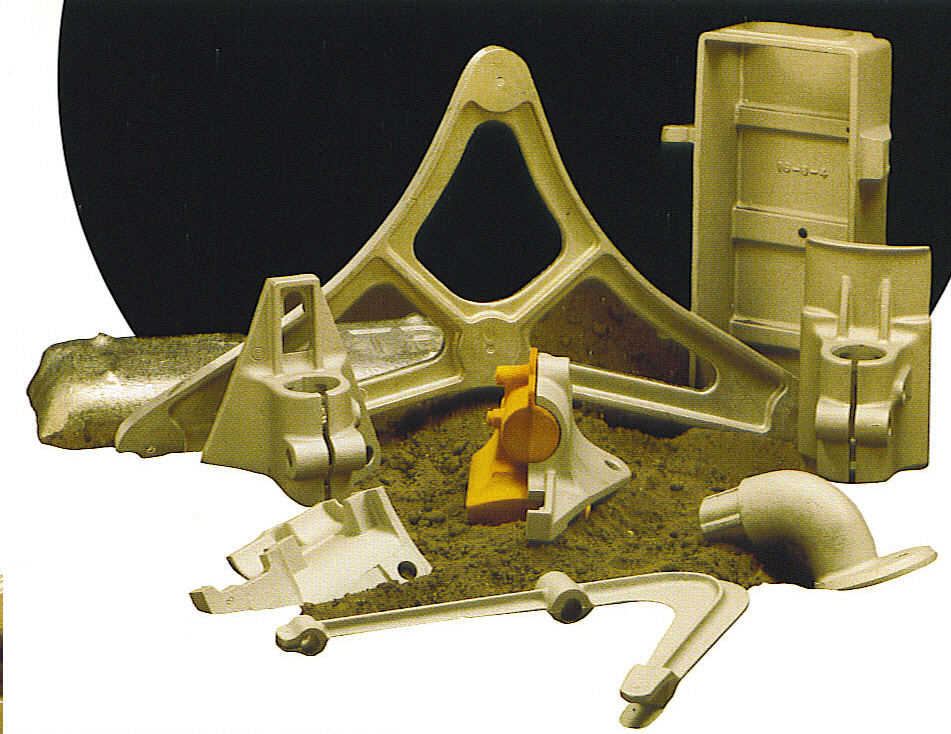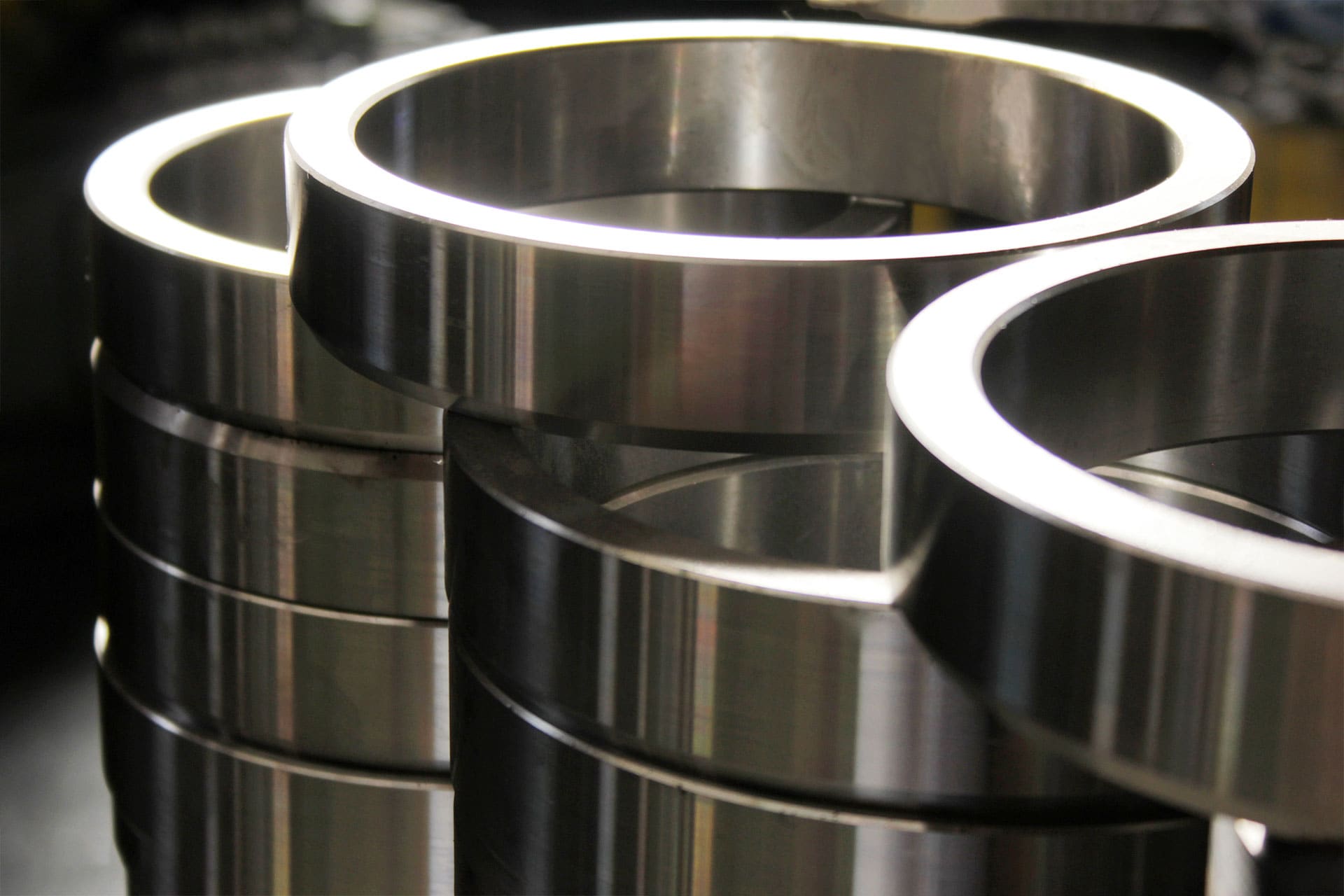How Aluminum Foundry processes create reliable components
Wiki Article
All Regarding Aluminum Castings: Understanding Their Duty and Relevance in Manufacturing
Light weight aluminum spreadings are essential to contemporary production, offering a blend of lightweight homes and longevity. They promote complicated styles while decreasing setting up prices. Industries such as aerospace and automotive often use these elements for enhanced performance. The production of light weight aluminum spreadings is not without its obstacles. Recognizing the nuances of this procedure reveals both the advantages and prospective challenges. Checking out these variables will give deeper understandings into their expanding value.Summary of Light Weight Aluminum Spreading Processes
Light weight aluminum casting procedures play an important duty in production, offering flexibility and effectiveness. These procedures involve putting molten aluminum into mold and mildews to develop exact forms and elements. Different methods are utilized, including sand spreading, pass away casting, and financial investment casting, each identified by its method of mold production and the designated application.Sand spreading uses a blend of sand and binder to develop molds, enabling complicated geometries. Pass away casting, on the other hand, entails requiring molten light weight aluminum into metal mold and mildews, resulting in high precision and smooth finishes. Financial investment spreading, usually used for intricate layouts, entails producing a wax pattern covered with a ceramic covering, which is then loaded with liquified aluminum.
These casting methods accommodate varied commercial demands, making light weight aluminum a recommended product for parts in fields such as automobile, aerospace, and durable goods. The option of casting strategy considerably affects the end product's high quality and performance.
Advantages of Using Aluminum Castings
The benefits of making use of aluminum castings in manufacturing are countless and significant. To start with, aluminum's lightweight nature adds to minimized overall item weight, enhancing power effectiveness in applications such as automobile and aerospace industries. Furthermore, light weight aluminum castings display excellent deterioration resistance, making sure durability and durability in rough atmospheres. The product's thermal and electric conductivity likewise makes it ideal for numerous applications, consisting of electronics and warm exchangers.In addition, light weight aluminum castings can be generated with complex styles, enabling for much more intricate shapes that fulfill certain practical requirements. This convenience adds to reduced assembly prices and enhanced design adaptability. The casting procedure itself is reliable, enabling for high-volume manufacturing with regular top quality. Lastly, aluminum is recyclable, making it an eco friendly option in manufacturing. Jointly, these advantages highlight why aluminum spreadings are significantly preferred across varied industries, providing both performance advantages and economic performance.
Usual Applications of Light Weight Aluminum Castings
While different products are made use of in manufacturing, light weight aluminum castings attract attention because of their broad series of applications throughout several markets. These spreadings are commonly made use of in the automobile market for engine parts, transmission housings, and architectural components, contributing to lighter automobiles and boosted gas performance. In the aerospace industry, light weight aluminum castings are vital for aircraft elements, where weight decrease is important for efficiency and security.In addition, the electrical market employs light weight aluminum castings for housings and structural elements in machinery, taking advantage of the material's exceptional conductivity. In durable goods, aluminum spreadings can be found in products such as devices and sporting equipment, offering resilience and a modern visual. The construction industry uses light weight aluminum spreadings in building aspects, window frames, and components, showcasing their adaptability and toughness. Generally, light weight aluminum castings play an integral duty in enhancing item efficiency and efficiency across various industries.
Key Manufacturing Techniques for Aluminum Castings
The manufacturing of aluminum castings relies upon different techniques, with sand spreading and pass away casting being amongst the most famous. Sand spreading entails creating molds from sand, permitting large elements and complex designs. In comparison, pass away casting utilizes high-pressure injection of liquified light weight aluminum right into recyclable molds, using accuracy and effectiveness for automation.Sand Casting Refine
Sand casting stands as one of one of the most commonly utilized approaches for creating light weight aluminum spreadings, thanks to its versatility and cost-effectiveness. This procedure includes creating a mold from a combination of sand and a bonding representative, normally clay. As soon as the mold and mildew is prepared, liquified aluminum is put right into it, allowing the steel to fill the cavity. After cooling, the mold is damaged away to disclose the spreading. Sand spreading accommodates huge parts and complex geometries, making it suitable for various applications. Furthermore, it enables simple adjustments, enabling producers to change styles swiftly. The surface coating may call for extra machining for exact applications, guaranteeing the final product fulfills quality criteria.Pass Away Casting Approaches
Die casting represents a very reliable technique for producing aluminum castings, characterized by its capability to supply high accuracy and superb surface coating. This technique primarily entails forcing liquified aluminum into a mold and mildew under high pressure, making certain that elaborate forms and fine details are recorded accurately. There are two main die spreading approaches: hot chamber and chilly chamber. Warm chamber die spreading is suitable for alloys with reduced melting factors and permits faster cycles, while chilly chamber pass away casting is ideal for high-temperature alloys, needing separate melting systems. Both methods enhance manufacturing prices and minimize material waste, making pass away casting a preferred selection in sectors such as automotive and electronic devices, where longevity and dimensional precision are vital.Sustainability in Aluminum Casting Production
While the demand for light weight aluminum castings proceeds to expand, manufacturers are progressively prioritizing sustainability in their manufacturing procedures. This shift is driven by the need to reduce environmental effect and conserve natural deposits. Many firms are embracing recycling initiatives, utilizing scrap light weight aluminum, which notably decreases power consumption and greenhouse gas exhausts contrasted to main aluminum manufacturing. In addition, improvements in casting technologies are allowing more efficient use of products, lessening waste throughout the manufacturing process.Producers are additionally checking out eco-friendly alternatives to standard casting techniques, such as 3D printing and progressed mold innovations, which aid maximize resource use. Aluminum Foundry. In enhancement, executing lasting techniques in supply chain administration assurances that basic materials are sourced properly. Because of this, the light weight aluminum casting sector is making strides towards a much more lasting future, lining up with worldwide environmental objectives while meeting the increasing need for high-performance aluminum products
Obstacles and Factors To Consider in Aluminum Casting
Light weight aluminum casting presents numerous obstacles that suppliers have to navigate to guarantee product honesty. Style intricacy can complicate the casting procedure, leading to prospective flaws and boosted manufacturing time. In addition, maintaining extensive quality assurance criteria is vital to satisfy the needs of accuracy and reliability in completed elements.
Layout Intricacy Issues
Designing parts for aluminum casting provides numerous complexities that designers need to navigate to achieve perfect results. One substantial challenge is the demand for precise geometry; intricate layouts can result in problems in mold production and raised threat of problems. Furthermore, thermal buildings of aluminum demand mindful consideration of cooling down rates, as uneven air conditioning can create warping. Wall surface thickness variants additionally present an obstacle, as they can impact circulation characteristics and structural integrity. Engineers have to stabilize design aesthetics with manufacturability, guaranteeing that features such as fillets and ribs are enhanced for stamina without complicating the spreading procedure. Factors to consider pertaining to draft angles are necessary to assist in mold and mildew launch, more complicating the layout procedure. These aspects collectively underscore the details associated with aluminum casting style.Quality Assurance Obstacles
Achieving top quality light weight aluminum castings entails steering a series of quality assurance obstacles that can significantly impact the final product. First, variations in raw product composition can cause disparities in casting homes, making it vital to assure worldly high quality. Second, the casting process itself is vulnerable to problems, such as porosity and shrinking, which can endanger architectural honesty. Furthermore, temperature control throughout melting and putting is crucial; changes can Wisconsin Aluminum Foundry cause uneven solidification, affecting dimensional accuracy. Thorough inspection approaches, including non-destructive screening, have to be used to identify defects early. Ultimately, maintaining strict procedure documentation and adherence to market standards is important for traceability and high quality assurance, highlighting the elaborate balance needed to generate reputable aluminum spreadings in production.Future Patterns in Aluminum Spreading Innovation
As makers venture to improve efficiency and sustainability, technologies in light weight aluminum spreading innovation are arising to meet these demands. One significant pattern is the integration of automation and artificial knowledge, which simplify manufacturing procedures and improve precision in casting operations. These improvements lessen human error and optimize resource usage, inevitably bring about cost decreases.In addition, the fostering of innovative materials and alloys is improving the landscape. New formulations boost efficiency attributes, such as deterioration resistance and light-weight homes, making light weight aluminum castings more functional across various industries.
In addition, sustainable practices are gaining traction, with an emphasis on recycling and lessening waste. Techniques such as 3D printing are additionally being checked out to produce complex geometries that were formerly unattainable
Often Asked Questions

Just How Do Aluminum Castings Compare to Various Other Materials?
Aluminum spreadings supply benefits such as lightweight, deterioration resistance, and excellent thermal conductivity contrasted to other materials. They are often liked for applications calling for sturdiness and effectiveness, especially in automobile and aerospace markets.What Is the Lifespan of Light Weight Aluminum Castings?
The life expectancy of light weight aluminum castings generally ranges from 10 to 50 years, relying on environmental problems, use, and maintenance. Their rust resistance and longevity add visibly to their long-lasting performance in various applications.Can Aluminum Castings Be Recycled?
Yes, light weight aluminum spreadings can be reused. The recycling process is effective, enabling the recovery of aluminum without substantial loss of top quality, making it a lasting option in production and decreasing environmental effect.What Precaution Are Needed Throughout Light Weight Aluminum Spreading?
Throughout aluminum casting, crucial security measures include putting on ideal individual protective devices, making sure correct ventilation, preserving devices, making use of fireproof materials, and carrying out safe dealing with procedures for liquified metal to stop injuries and mishaps.Just How Do Temperature Changes Influence Light Weight Aluminum Castings?
Temperature changes substantially influence light weight aluminum spreadings by influencing fluidness, solidification prices, and mechanical buildings. Fast air conditioning can lead to increased brittleness, while progressive cooling promotes better architectural integrity and lowers the threat of flaws.Pass away casting, on the various other hand, includes requiring liquified aluminum right into steel mold and mildews, resulting in high accuracy and smooth surfaces. The manufacturing of aluminum spreadings depends on various strategies, with sand casting and die spreading being amongst the most famous. Sand casting stands as one of the most extensively made use of approaches for generating aluminum spreadings, thanks to its convenience and cost-effectiveness. Pass away casting represents a very reliable technique for creating light weight aluminum castings, defined by its capacity to provide high precision and outstanding surface finish. While the demand for light weight aluminum castings continues to grow, producers are significantly prioritizing sustainability in their production procedures.
Report this wiki page